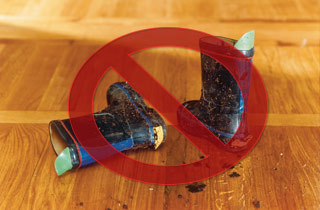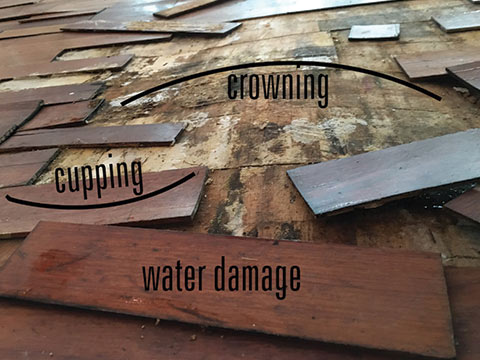Back to Maintenance & Care
Mastering Winter Wood Flooring Maintenance

The winter season is here with all its charms and amazing surprises. The change in the weather means a change in the environment of the real wood flooring. This requires some precautions and extra preparation, which also applies to your floor care and maintenance routine.
Usually, the winter season is associated with a more aggressive environment in general. This pretty much does not mean that your wood flooring will transform dramatically, but snow, ice and rain can certainly be a reason for some serious issues. Don’t worry, because if you make sure to stick to a proper and regular maintenance routine you will be able to adapt to the colder and more humid weather outside.
This winter season make sure to take your time and protect your floor from the winter debris, soil, excess moisture and temperature and humidity changes. Here are some professional recommendations and advice you can try for yourself:
 Winter Debris
Winter Debris
Simply imagine all the fluffy white snow falling down the sky and turning the town into a real winter wonderland. Or a rainy day spent at home with the relaxing sound of raindrops tapping on your window. On the other hand, imagine how fluffy white snow will soon turn into a nasty mixture of melted ice, soil and debris, covering all roads and paths.
Or the salt and ice melting products that cover all the slippery and icy paths and roads and how all these will quickly transfer to your shoes and then at home, right on your clean hardwood flooring. Well, the second part is this dream is simply not enjoyable and difficult to handle, so if you want to prevent all this from happening (well, not stopping the snow and rain from falling down the sky, this is pretty much impossible), make sure to follow some precautions and maintenance.
One of the most common products used for the roads and melting the ice is sodium chloride (also known as rock salt), which is a highly abrasive product and pretty much damaging to the protective finish layer. Sodium chloride is easy to enter the house, sticking on the soles of your shoes and transferring to your wooden floor. To prevent that, we highly recommend you take a no-shoes-inside-the-house strategy and stick to it the whole year, or at least in the wintertime. Plus, you will finally stop stressing over all the dust, dirt, debris, soil and whatnot entering the house and damaging your wooden floor. Finally, you will need less cleaning, and this is a good bonus! Dirt and grit get tracked all year round, however, the amount of dirt in the wintertime is significantly higher.
Well, if the no-shoes policy is not your cup of tea, there are other ways to prevent dirt and debris from entering your house, or at least limit the amount of dirt as much as possible. This can be easily achieved if you make sure to place rugs and mats strategically around the house, but mostly on both sides of your front door, where mats will catch a great deal of dirt. Choose a coarse mat for inside the house, where the coarse material will catch the majority of the large chunks of debris and prevent them from entering your house and getting on your floors.
Excess Moisture
It is popular that moisture and wood are not best friends. Excessive moisture can be dangerous for wooden floors, causing a lot of stress and many issues. Left unattended and untreated, excessive moisture can cause cupping and crowning of the wood, which can also lead to broken or lifted planks. The finish of your floor can also be damaged by moisture and its protective power will be weakened for sure. If you have pets, also make sure that they are trained to not enter the house before their paws are wiped from the outside moisture and dirt. Furthermore, make sure to add some extra sessions with the mop whenever needed and wipe off the moisture and dirt from your wooden floor as soon as you notice it.
Humidity Changes
It is not a secret that real wood floors are prone to some damages and issues caused by higher levels of humidity and regular and high-temperature changes. Just like moisture, humidity could have a very damaging effect on your wooden floor, making it struggle with imperfections and experience wear and tear in a shorter period. Humidity can lead to gaps and separations in your wooden floor and an overall lack of stability, sturdiness and durability. When winter comes and humidity becomes an issue, keep in account that wood, as a natural product, responds to the changes in its environment, which means that expanding and shrinking of the boards is a natural process that will probably happen. However, expanding and shrinking the wooden boards is a natural process, which means that there is not a lot you can do, but also does not necessarily mean that great damage is ahead. Even if slight gaps start appearing between the boards, this does not mean that you are in emergency need of repairs and refurbishment, so don’t rush to the phone to call your local wood flooring contractor.